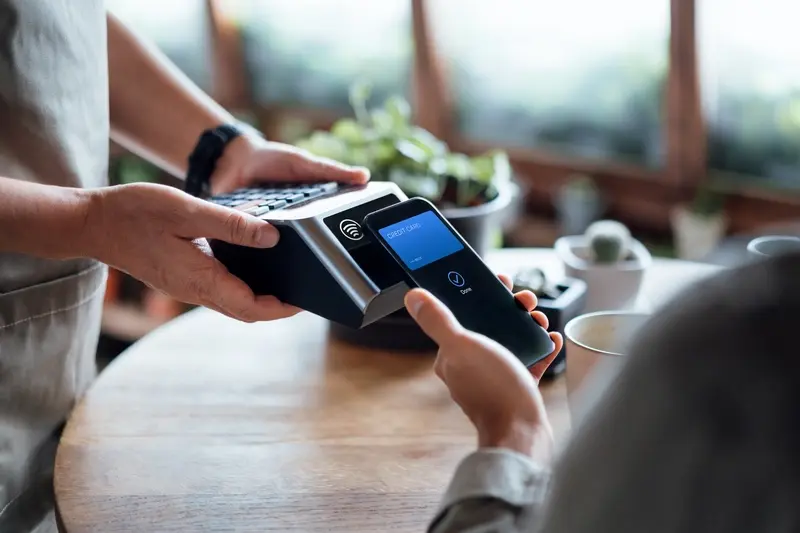Can My App Integrate With My Existing Business Systems?
Most businesses today run on a complex web of different software systems—your customer database talks to your email marketing platform, your sales team uses a CRM that connects to your invoicing software, and your inventory management system feeds data to your accounting package. It all works together beautifully. Then you decide to build a mobile app for your business and suddenly wonder: will this new app play nicely with everything else I've already got?
The short answer is yes, but like most things in app development, it's not quite that simple. App integration with existing business systems is absolutely possible and often necessary for creating a seamless customer experience. Think about it—if your app can't access customer information from your CRM or update inventory levels in real-time, you're essentially creating a digital island that sits apart from your main business operations.
The key to successful app integration isn't just making systems talk to each other—it's making sure they're having the right conversation at the right time
Throughout this guide, we'll explore how app integration works in practice, what technical requirements you need to consider, and how to plan your integration strategy. Whether you're looking at CRM app integration, business system integration, or app data synchronisation, understanding these fundamentals will help you make informed decisions about connecting your new app to your existing business infrastructure.
What Are Business System Integrations and Why Do They Matter?
After building mobile apps for companies across different industries for the best part of a decade, I can tell you that business system integrations are basically ways to connect your mobile app to the software you already use to run your business. Think of your customer database, accounting software, inventory management system, or email marketing platform—these are all business systems that hold valuable data about your company.
When your app can talk to these systems, magic happens. Your customers can log into your app using their existing account details; their purchase history appears automatically; inventory levels update in real-time across all platforms. Without these connections, you'd be manually copying information between systems or asking customers to enter the same details multiple times. That's not just frustrating for everyone involved—it's a recipe for errors and missed opportunities.
The Real Impact on Your Business
I've watched clients transform their operations once they understood what proper integration could do. Your staff spend less time on data entry and more time helping customers; your app becomes a natural extension of your existing workflow rather than another system to manage separately. Most importantly, your customers get a seamless experience that makes them want to keep using your app rather than switching to a competitor who's got their integration sorted.
Understanding Your Current Business Systems and Data Flow
Before we start talking about app integration, you need to know what you're working with. I can't tell you how many times I've had clients come to me wanting to connect their app to their business systems, only to discover they don't actually know how their current systems talk to each other—or if they talk at all!
Your business probably uses several different systems already. You might have a CRM for managing customers, an accounting system for handling invoices, and maybe an inventory management tool for tracking stock. The question is: how does information move between these systems right now?
Mapping Your Current Data Journey
Think about what happens when a customer places an order. Does the information automatically appear in your CRM, or does someone have to type it in manually? When you update a customer's details in one system, do they change everywhere else? This is what we call data flow, and understanding it is the foundation of successful app integration.
Start by writing down every system your business uses and how information currently moves between them. You'll be surprised what you discover!
Here are the most common business systems that apps typically need to connect with:
- Customer Relationship Management (CRM) systems
- Accounting and invoicing software
- Inventory management tools
- Email marketing platforms
- Payment processing systems
- Project management software
Once you understand your current setup, planning your app integration becomes much clearer. You'll know which systems need to share data with your app and which connections will give you the biggest benefit.
Common Types of App Integrations That Connect to Your Business
Right, let's talk about the bread and butter integrations that most businesses need. After working on hundreds of app projects, I can tell you there are some clear patterns in what people want to connect—and they're probably not as complicated as you think.
Customer and Sales Data
Your CRM system is usually the first thing people want to hook up. Makes sense really; you want your app to know who your customers are and what they've bought before. Salesforce, HubSpot, Pipedrive—these are the usual suspects. Your app can pull customer details, show purchase history, or even let sales teams update records on the go.
E-commerce platforms like Shopify or WooCommerce are another big one. Your app might need to show product catalogues, process orders, or track inventory levels in real-time. If you're looking for more detailed guidance on these specific connections, our guide on connecting your app to existing business software covers the technical aspects in greater depth.
Payment and Financial Systems
Payment gateways are pretty much standard these days. Stripe, PayPal, Square—they all play nicely with mobile apps. But don't forget about your accounting software too. QuickBooks, Xero, and Sage integrations help keep your books balanced without manual data entry (which nobody enjoys doing).
Email marketing platforms like Mailchimp or Constant Contact often get connected so you can sync customer data and trigger campaigns based on app behaviour. This type of integration becomes particularly powerful when you understand how to engage your app users through email marketing, creating seamless communication workflows. Social media APIs let users share content or sign in with their existing accounts—saves them creating yet another password they'll forget!
Technical Requirements for Connecting Apps to Business Systems
Right, let's get into the technical stuff—but don't worry, I'll keep it simple. When you're planning app integration with your business systems, there are some basic technical requirements that need to be sorted before anything else happens. Think of it like making sure you have the right plugs before you try to connect two devices together.
API Access and Authentication
Your existing business systems need to have APIs (Application Programming Interfaces) available. These are basically doorways that let your app talk to your CRM, accounting software, or inventory system. Most modern business systems come with APIs built-in, but older systems might need some work. You'll also need proper authentication methods—usually API keys or OAuth tokens—to make sure only authorised connections can access your data.
The biggest mistake I see businesses make is assuming their legacy systems can integrate easily without checking the technical capabilities first
Data Format Compatibility
Your app and business systems need to speak the same language when it comes to data. This usually means ensuring both sides can handle common formats like JSON or XML. App data synchronisation works best when the data structures match up properly—customer records, product information, and transaction details all need to map correctly between systems. Sometimes you'll need middleware or custom integration tools to bridge any gaps between different data formats.
Planning Your App Integration Strategy and Data Mapping
Right, let's get down to the nitty-gritty of planning your integration strategy. This is where the rubber meets the road—you need to map out exactly what data goes where and when. I can't tell you how many times I've seen businesses jump straight into development without proper planning, only to discover their customer database doesn't talk to their inventory system the way they expected.
Start by listing every piece of data your app needs to access or update. Customer details, product information, order histories, payment records—write it all down. Then identify where each piece currently lives in your business systems and how often it needs to sync with your app. This planning phase is crucial to your overall mobile application development strategy, as integration requirements often influence technical architecture decisions.
Key Steps for Effective Data Mapping
- Document all data sources and their current formats
- Identify which systems need real-time sync versus batch updates
- Map user permissions and access levels for each data type
- Plan for data validation and error handling processes
- Create backup procedures for when integrations fail
Don't forget about user workflows either. Your sales team might need different access levels than your customer service folks. Think about who uses what data and when they need it—this will help you prioritise which integrations to build first and how complex they need to be.
Challenges You Might Face During Integration and How to Solve Them
Let me be honest with you—app integration isn't always smooth sailing. After working on countless business system integrations over the years, I've seen the same problems pop up time and time again. The good news? Most of these issues are completely solvable once you know what to look out for.
Data Format Mismatches
Your biggest headache will likely be data that doesn't speak the same language. Your CRM might store customer names as "FirstName LastName" whilst your app expects "LastName, FirstName". Or dates might be formatted differently between systems. The solution is building a translation layer—think of it as a converter that reformats data as it moves between your app and business systems. This requires careful planning during your app data synchronisation setup, but it's absolutely doable.
Authentication and Security Hurdles
Many business systems have strict security requirements that can block your app integration attempts. APIs might require special certificates or complex authentication tokens that expire regularly. Work with your IT team early to understand these requirements and build proper security protocols into your app from day one. For enterprise-level integration challenges, insights from enterprise application development experts can provide valuable guidance on handling complex security and scalability requirements.
Start with a small pilot integration using non-critical data first—this lets you identify and fix problems before they affect your main business operations.
Best Practices for Maintaining Secure and Reliable App Integrations
Once your app is talking to your business systems, the real work begins—keeping everything running smoothly and securely. I've seen too many businesses launch their integrations and then forget about them, which is a bit like buying a car and never changing the oil!
Keep Your Security Tight
Security should be your top priority. Always use encrypted connections when your app talks to your business systems; think of it as sending your data in a locked box rather than an open envelope. Change your API keys regularly—at least every six months—and never store sensitive information like passwords directly in your app code. Set up monitoring alerts so you know immediately if someone tries to access your systems without permission.
Monitor Performance and Plan Ahead
Check your integration performance weekly. If your app usually processes 100 orders per hour but suddenly drops to 50, something's wrong. Keep backups of all your integration settings and test them monthly. When your business grows and you're handling more data, your integrations need to grow too—plan for this early rather than waiting for things to break. Remember that seamless integration is one of the key factors that can improve your company's customer service through faster response times and better access to customer information. Document everything you do so your team can fix problems quickly when they happen.
Conclusion
So there you have it—app integration with your existing business systems isn't just possible, it's probably one of the smartest moves you can make for your company. I've worked on countless projects where clients initially thought their systems were too old or too complex to connect with a modern mobile app, but we always found a way. Whether it's CRM app integration, connecting to your inventory management system, or syncing customer data across platforms, there's almost always a solution.
The key is starting with a clear understanding of what you want to achieve. Do you need real-time app data synchronisation? Are you looking to streamline customer interactions? Or maybe you want your sales team to access business system integration data while they're out in the field? Once you know your why, the technical stuff becomes much more manageable.
Yes, you'll face challenges along the way—legacy systems can be stubborn, data formats might not play nicely together, and security will always be a concern. But with proper planning, the right technical approach, and realistic expectations about timelines, most integration projects succeed. The businesses that invest in connecting their apps to their existing systems typically see better user adoption, cleaner data, and more efficient operations. That's a win worth working towards.
Share this
Subscribe To Our Learning Centre
You May Also Like
These Related Guides

Which Social Media APIs Should I Integrate Into My App?

Should My Luxury App Integrate With My Existing CRM System?



